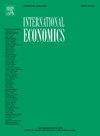Floating exchange rate efficiency: Grouping patterns and pandemic impacts
引用次数: 0
Abstract
This study investigates the efficiency of global floating exchange rates spanning 19 years from 2004 to 2022. We examine the presence of long memory in a sample of twenty-five floating exchange rates against the US Dollar, representing 63 % of 2022 global GDP. To that end, we rely on rolling window estimates of the Hurst coefficient using Detrended Fluctuation Analysis (DFA) and Generalized Hurst Exponent (GHE) methodologies focusing on the impact of the COVID crisis. Repercussions of the COVID-19 pandemic on efficiency clearly emerge. Complementing previous partial studies, we obtain patterns that group currencies according to their pandemic efficiency reaction, presenting a comprehensive understanding of the dynamics of floating exchange rates. The broad sample of currencies analyzed allows the identification of two distinct groups of currencies, revealing a temporary shift in FX markets away from efficiency, with one group exhibiting prolonged deviations. Given the importance of the forex market, our empirical findings hold substantial implications for the broader finance community.
浮动汇率效率:分组模式和流行病影响
本研究考察了2004年至2022年19年间全球浮动汇率的效率。我们以占2022年全球GDP 63%的25个对美元浮动汇率为样本,研究了长记忆的存在。为此,我们依靠使用非趋势波动分析(DFA)和广义赫斯特指数(GHE)方法对赫斯特系数进行滚动窗口估计,重点关注COVID危机的影响。COVID-19大流行对效率的影响已明显显现。作为对先前部分研究的补充,我们获得了根据货币对流行病的反应效率对其进行分组的模式,从而全面了解浮动汇率的动态。通过分析广泛的货币样本,可以识别出两组不同的货币,揭示了外汇市场暂时偏离效率的转变,其中一组表现出长期的偏离。鉴于外汇市场的重要性,我们的实证研究结果对更广泛的金融界具有重大意义。
本文章由计算机程序翻译,如有差异,请以英文原文为准。
求助全文
约1分钟内获得全文
求助全文
来源期刊

International Economics
Economics, Econometrics and Finance-Economics, Econometrics and Finance (all)
CiteScore
6.30
自引率
0.00%
发文量
74
审稿时长
71 days
 求助内容:
求助内容: 应助结果提醒方式:
应助结果提醒方式:


